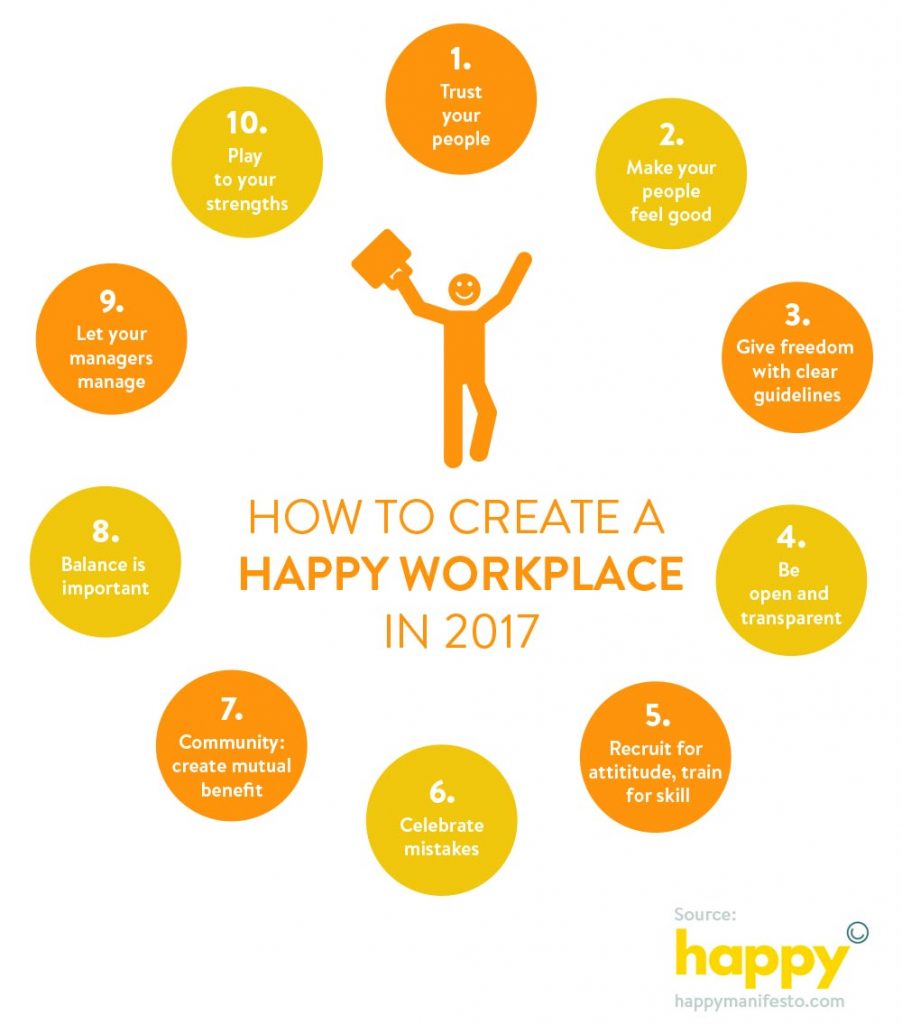16th Jan 2017
How to Create a Happy Workplace in 2017
The health and wellbeing of employees is key to the success of any business. When colleagues are energised, it can boost morale, increase collaboration and improve productivity. There are an increasing number of ways of how to create a Happy Workplace in 2017.
Creating a happy workplace is an essential part of maintaining the overall well-being of your workforce. At Blueprint one of our values is ‘love what you do’. We love what we do, and we want to help you do the same.
We’re passionate about creating you a space that helps energise your staff and allows your whole organisation to work to its full potential.
At Blueprint we’re also big fans of The Happy Manifesto, written by Henry Stewart, the founder of Happy. The manifesto is the definitive guide for anyone who wants to transform productivity, loyalty and innovation within their organisation.
Here are ten simple steps from it that you can follow to create a happy workplace for 2017:

1. Trust your people
Do you assume it’s your job to work out the best way for your people to do things?
What would life be like if you gave up on that and saw your key role as supporting others to make decisions and come up with their solutions?
Why not step out of that and instead, focus on empowering and supporting your people to do the right thing, for the right reasons?
2. Make your people feel good
Your staff are your biggest asset, the lifeblood of your business.
The most successful companies see creating a great workplace as a key strategic objective. People work best when they feel good about themselves.
Remember that.
3. Give freedom with clear guidelines
People want to know what is expected of them, but also want the freedom to achieve it, so be flexible.
Set the framework, but give your people the ability to work within it.
4. Be open and transparent
Empower your people to take responsibility and ownership by giving them the information they need to succeed.
If your staff aren’t fully informed about what is going on in the company, including the finances, then they won’t be fully aware of what their responsibilities, and the effects of what they do in achieving them.
5. Recruit for attitude, train for skill
Many employers value attitude and attributes ahead of qualifications and experience.
So, what are you looking for from your employees? Is it their ability, or their potential?
6. Celebrate mistakes
Making a mistake can be a positive thing, provided we learn from it.
Creating a blame-free culture will enable your people to innovate without fear.
7. Community: create mutual benefit
The biggest impact most companies have on society is through the products they sell, the people they employ and the suppliers they buy from.
Is ethics at the heart of your company’s decisions, or just an add-on to make you look or feel good?
Profits are important and necessary, but not sufficient. People may, or may not, buy what you sell, but they will all believe in what you believe.
8. Balance is important
Many businesses regard working late as a sign of commitment, but it’s just as likely to be a sign of poor time management, too many meetings and unnecessary distractions in the workplace.
If your people work beyond their hours, are they doing so effectively?
9. Let your managers manage
Make sure your people are supported by people who are supportive and find other routes for those whose strengths lie elsewhere.
Sometimes, the ‘do-ers’ can do better if they are are allowed to ‘do’ rather than worry about the performance of others.
10. Play to your strengths
Make sure your people spend most of their time doing what they are best at.
Give them time to focus on their strengths and they will deliver the results. Distract them, and they may not.
If you’d like to read the full Happy Manifesto you can download the book for free from the Happy Manifesto website here.